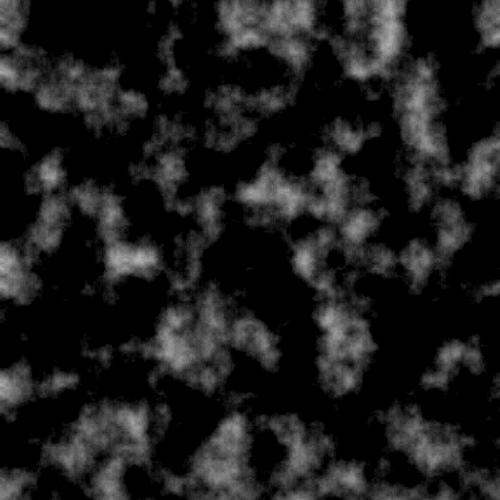Hallo liebe Leute,
ich bin blutiger Anfänger auf dem Gebiet der Shader und versuchte mich daran einen Perlin Noise Shader zu implementieren. Ich war auch soweit erfolgreich, aber das Ergebnis sieht nicht aus wie ich es erwartet habe:

Mein Code:
Ich hoffe, dass mir Jemand helfen kann, dass mein Ergebnis mehr nach soetwas wie hier aussieht:

Vielen Dank und Gruß im Voraus!
ich bin blutiger Anfänger auf dem Gebiet der Shader und versuchte mich daran einen Perlin Noise Shader zu implementieren. Ich war auch soweit erfolgreich, aber das Ergebnis sieht nicht aus wie ich es erwartet habe:

Mein Code:
Code:
uniform sampler2D permTexture;
uniform float x;
uniform float y;
uniform float z;
varying vec2 v_texCoord2D;
#define ONE 0.00390625
#define ONEHALF 0.001953125
float fade(float t) {
// return t*t*(3.0-2.0*t); // Old fade, yields discontinuous second derivative
return t*t*t*(t*(t*6.0-15.0)+10.0); // Improved fade, yields C2-continuous noise
}
/*
* 3D classic noise. Slower, but a lot more useful than 2D noise.
*/
float noise(vec3 P)
{
vec3 Pi = ONE*floor(P)+ONEHALF; // Integer part, scaled so +1 moves one texel
// and offset 1/2 texel to sample texel centers
vec3 Pf = fract(P); // Fractional part for interpolation
// Noise contributions from (x=0, y=0), z=0 and z=1
float perm00 = texture2D(permTexture, Pi.xy).a ;
vec3 grad000 = texture2D(permTexture, vec2(perm00, Pi.z)).rgb * 4.0 - 1.0;
float n000 = dot(grad000, Pf);
vec3 grad001 = texture2D(permTexture, vec2(perm00, Pi.z + ONE)).rgb * 4.0 - 1.0;
float n001 = dot(grad001, Pf - vec3(0.0, 0.0, 1.0));
// Noise contributions from (x=0, y=1), z=0 and z=1
float perm01 = texture2D(permTexture, Pi.xy + vec2(0.0, ONE)).a ;
vec3 grad010 = texture2D(permTexture, vec2(perm01, Pi.z)).rgb * 4.0 - 1.0;
float n010 = dot(grad010, Pf - vec3(0.0, 1.0, 0.0));
vec3 grad011 = texture2D(permTexture, vec2(perm01, Pi.z + ONE)).rgb * 4.0 - 1.0;
float n011 = dot(grad011, Pf - vec3(0.0, 1.0, 1.0));
// Noise contributions from (x=1, y=0), z=0 and z=1
float perm10 = texture2D(permTexture, Pi.xy + vec2(ONE, 0.0)).a ;
vec3 grad100 = texture2D(permTexture, vec2(perm10, Pi.z)).rgb * 4.0 - 1.0;
float n100 = dot(grad100, Pf - vec3(1.0, 0.0, 0.0));
vec3 grad101 = texture2D(permTexture, vec2(perm10, Pi.z + ONE)).rgb * 4.0 - 1.0;
float n101 = dot(grad101, Pf - vec3(1.0, 0.0, 1.0));
// Noise contributions from (x=1, y=1), z=0 and z=1
float perm11 = texture2D(permTexture, Pi.xy + vec2(ONE, ONE)).a ;
vec3 grad110 = texture2D(permTexture, vec2(perm11, Pi.z)).rgb * 4.0 - 1.0;
float n110 = dot(grad110, Pf - vec3(1.0, 1.0, 0.0));
vec3 grad111 = texture2D(permTexture, vec2(perm11, Pi.z + ONE)).rgb * 4.0 - 1.0;
float n111 = dot(grad111, Pf - vec3(1.0, 1.0, 1.0));
// Blend contributions along x
vec4 n_x = mix(vec4(n000, n001, n010, n011),
vec4(n100, n101, n110, n111), fade(Pf.x));
// Blend contributions along y
vec2 n_xy = mix(n_x.xy, n_x.zw, fade(Pf.y));
// Blend contributions along z
float n_xyz = mix(n_xy.x, n_xy.y, fade(Pf.z));
// We're done, return the final noise value.
return n_xyz;
}
void main( void )
{
float n = noise(vec3(x + v_texCoord2D.x * 4f, y + v_texCoord2D.y * 4f, z));
gl_FragColor = 0.5 + 0.5 * vec4(n, n, n, n);
}Ich hoffe, dass mir Jemand helfen kann, dass mein Ergebnis mehr nach soetwas wie hier aussieht:

Vielen Dank und Gruß im Voraus!
